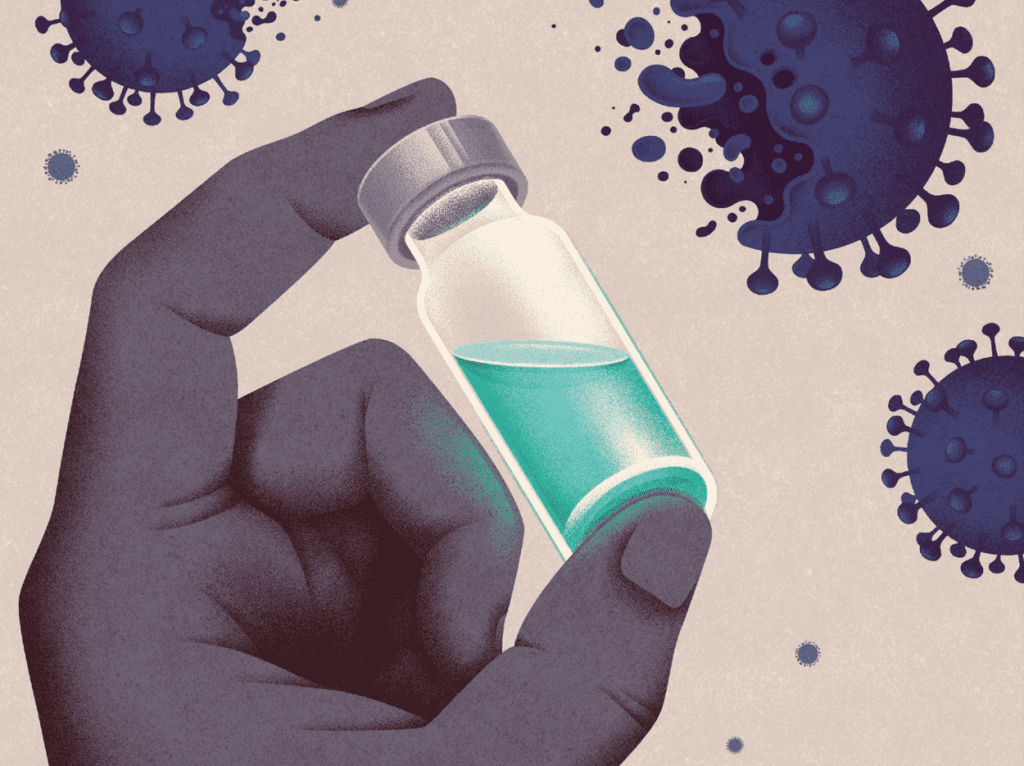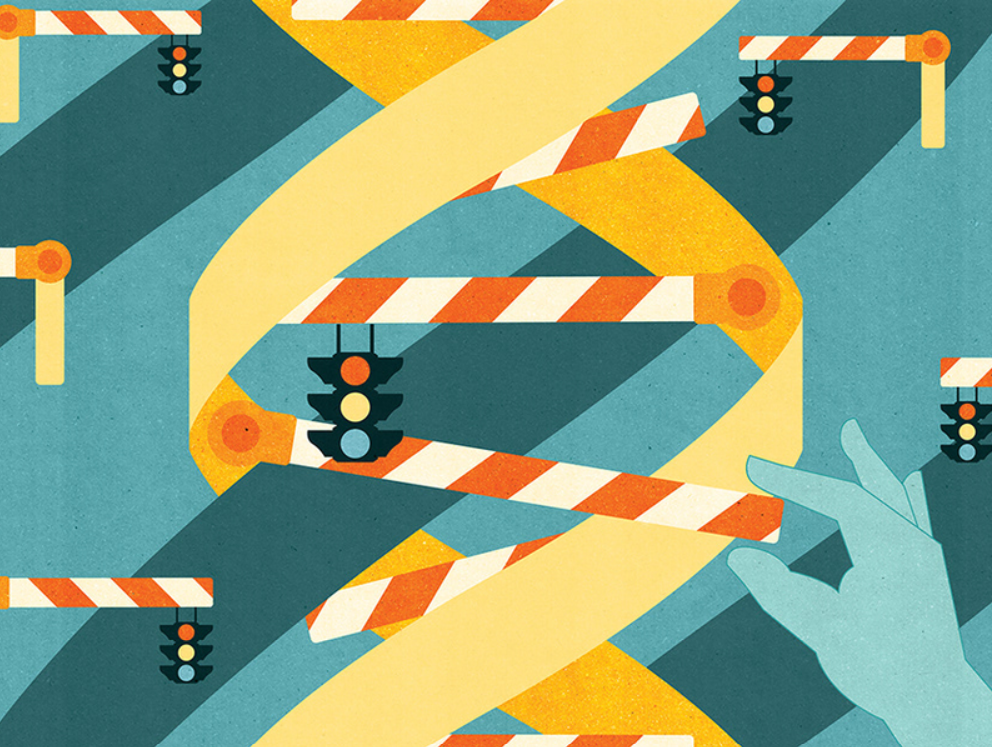
The National Human Genome Research Institute elaborates on the meaning of a virus in great biological detail. It states that a virus is a small collection of genetic code, either DNA (deoxyribonucleic acid) or RNA (ribonucleic acid), surrounded by a protein coat (nucleocapsid). If the immune system is not able to ward off the same, it can be tremendously detrimental to a living organism considering how it attaches to a host body, replicates itself, infects the host organism, and kills host cells. It can be transmitted through the respiratory tract, blood transfusion, contact with contaminated surfaces, etc. Examples include Influenza, HIV, Rabies, Ebola, etc.
In contemporary terms, the paramount instance of the same is the ‘severe acute respiratory syndrome Coronavirus 2’ (SARS-CoV-2) which causes the disease of coronavirus. The World Intellectual Property Organisation defines a patent as an exclusive right granted for an invention, which is a product or a process that provides, in general, a new way of doing something, or offers a new technical solution to a problem. Thus, the quintessence of a patent is novelty, invention, and legal protection. It is granted to an entity due to reasons of basic ethics and morality. This is because every person deserves the right to ownership of something they have created through their diligence and perseverance. This right is territorial and is applicable for 20 years since the date of filing of the patent.
Can a Virus be Legally Patented in India?
The principal act used for governing patents in India is the Patents Act of 1970. It mentions that the mere discovery of any living or non-living creature in nature does not fall in the category of an invention. Furthermore, it mentions that plants and animals other than microorganisms as well as biological processes for production or propagation of the former can also not be counted as an invention. Thus, the actual virus itself and inventions claiming biological entities in virus-like antigens/ antigen-binding fragments without any modifications, natural genetic sequencing, isolated antibody, host cells, cell lines comprising novel nucleic acids, virus-like particles, etc. are not patentable.
However, artificial data isolated and extracted from the naturally occurring virus is patentable and is formally known as gene patenting. This data can be used to create vaccines and other medicines in an attempt to combat the virus and is the prime reason why a virus is patented in the first place.
This act was amended in 2002 and then again in 2005. The former amendment added microorganisms (including a virus) within the purview of patentability while the latter amendment was famed for extending product patents to pharmaceutical substances for the very first time. This was in compliance with the agreement of Trade-Related Aspects of Intellectual Property Rights, i.e., the TRIPS agreement. Section 5 of this act states that in the case of inventions being claimed relating to food, medicine, drugs, or chemical substances, only patents relating to the methods or processes of manufacture of such substances could be obtained.
These sections give the impression that India has stringent laws vis-a-vis a virus and its related vaccine patent. However, there are multiple instances where India has granted the same. In 2017, it granted a patent valid till the year 2026 to Pfizer (a US company) for a vaccine called ‘Prevnar 13’. This vaccine prevents the disease pneumonia which is one of the leading causes of death in children under five years of age. This was considered to be startling and unprecedented as the patent was rejected in the EU.
Furthermore, the Indian grant was vehemently opposed by the Médecins Sans Frontières (MSF) as follows: At MSF, we have watched far too many children die of pneumonia, and we’re not going to back down until price is no longer a barrier. The decision to give Pfizer a patent in India for this vaccine is unmerited and just a way for them to remain the only game in town by blocking more affordable pneumonia vaccines. – Kate Elder, Vaccines Policy Advisor for MSF’s Access Campaign.
Case Laws Regarding a Virus Patent

The case of Diamond v. Chakrabarty in the 1980s initiated the concept of patentability of microorganisms. Here, a genetic engineer named Dr. Ananda Mohan Chakrabarty made an application for a patent for a live human-made & genetically engineered bacterium. This was capable of breaking the components of crude oil. Thus, the intention of the same was to prevent and treat oil spills that cause severe harm to living beings as well as the environment. The Supreme Court of the United States of America granted the patent by stating that instead of the bacteria occurring naturally, it was human-made and adapted to a particular purpose.
In India, the two-decades-old landmark case of Dimminaco A.G. v. Controller of Patents and Designs & Others played a vital role in the legal validity of a virus patent. It was in accordance with the aforementioned judgment. In this case, the plaintiff wanted to file a patent in regards to the process for the preparation of infectious Bursitis Vaccine. This was initially rejected as the vaccine comprised of a live virus and was thus not patentable. The High Court of Calcutta ultimately granted the patent stating that the process of making the vaccine falls under the category of manufacture. Moreover, it considered the inventiveness, usefulness, novelty, and industrial application of the vaccine and opined that those conditions were successfully fulfilled in the present case.
The Consequences

Allowing a virus patent has complicated consequences. On the one hand, it provides an incentive for innovation and constant R&D in the field of virology as well as general fields of science and technology. This can create invaluable vaccines and medicines and save countless lives. On the other hand, it adversely affects the economy as it thwarts other individuals from copying and selling the invention and thus capitalizing from the same. This allows the holder of a patent to essentially create a monopoly market and affect the invention’s supply and demand by creating an artificially high price. It creates excess power that can easily and dangerously be misused.
A case in point is the current hoarding of coronavirus vaccines by first-world nations that fall under the G7 as well as by certain countries under the European Union. This harmfully affects the third-world nations as it denies them access to the vaccine and also contributes to the creation of new variants of the virus. This claim is backed by data that states that only 10% of the low-income countries have received at least one dose of the coronavirus vaccine. This is precisely why nations such as India and South Africa are urging for a patent waiver vis-a-vis the vaccines in the World Trade Organisation (WTO).
Should a Virus Patent be Waived off?
There are two schools of thought regarding a waiver of a virus patent. One theory is that the waiver should not take place as it is unnecessary. This is because other options such as compulsory licensing (i.e., when a government allows someone else to produce a patented product or process without the consent of the patent owner or plans to use the patent-protected invention itself) already exist that can be utilized in cases of emergency. Furthermore, experts say that it is not mandatory that a vaccine waiver will immediately solve the issues of virus vaccine availability. Other factors such as complicated technical know-how, raw materials, and infrastructure, safety issues, etc. come into play here. Thus, it is preferable if the patent is maintained and exports of the same are increased from the developed to the developing countries.
An argument against this theory is that a waiver will ensure equitable international distribution of the vaccines because it creates a reasonable and affordable price of the same. It will also allow the third-world nations to personally manufacture the vaccine as they will be able to access the trade secrets and technology needed for the same. It argues that the compulsory licensing process is bureaucratic, highly time-consuming, and complex. There is also a lack of detailed and adequate knowledge regarding certain terms and concepts in this regard. Thus, it is necessary that this option is discarded and a virus patent waiver is seriously considered.
Personal Recommendations and Conclusion
A virus patent is a complicated and multi-faceted concept with various merits and demerits. It results in a clash between technological and economic growth versus the saving of precious lives. It is legally valid in India but is heavily restricted as per the provisions of the Indian Patent Act, 1970. This act must be amended again considering the recent coronavirus pandemic. National and International provisions must be made that allow for patents of the virus but also prevent monopoly of vaccines and artificially high prices at the same time. This will ensure the promotion of technological research and development as well as sufficient availability of vaccines in third-world nations; creating a so-called win-win situation.